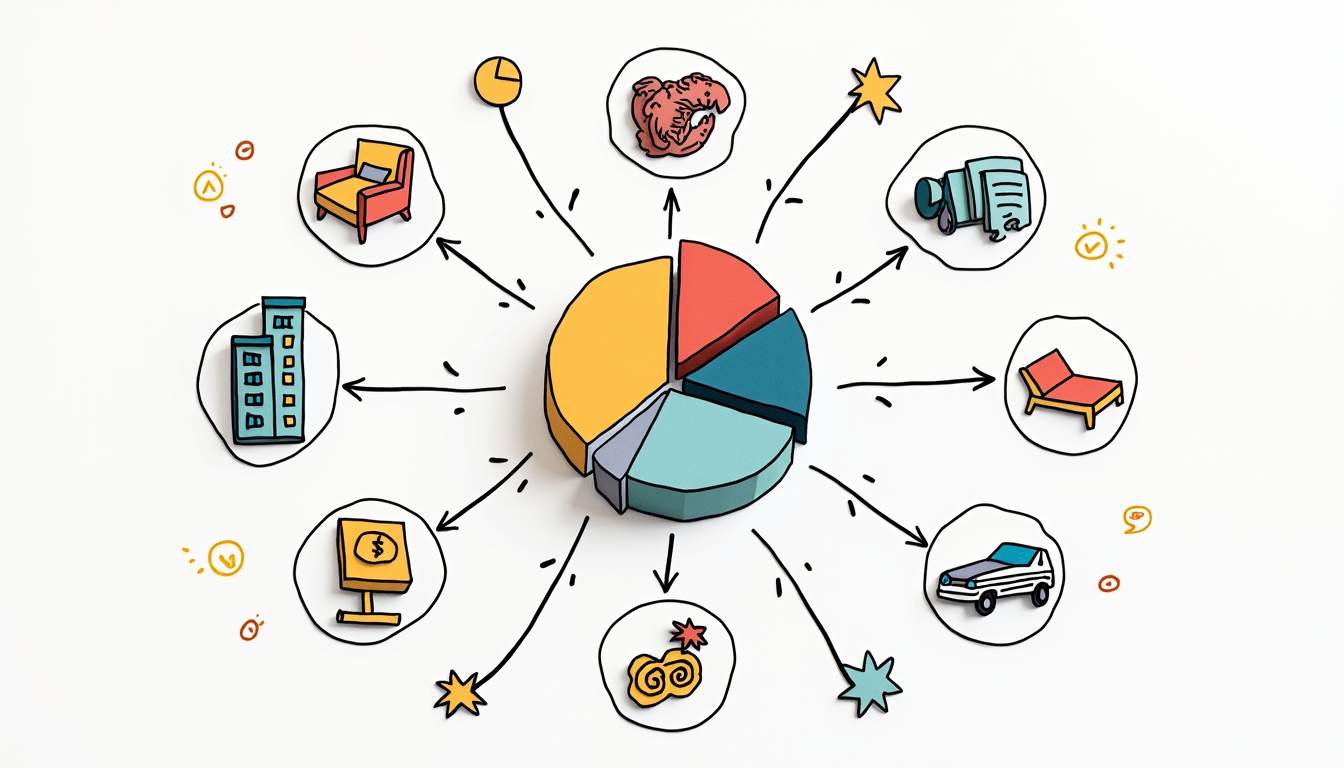Introduction to Rate Plans
In the realm of hotel revenue management, a rate plan is a critical component that dictates how room rates are structured, marketed, and sold to potential guests. A rate plan encompasses various pricing strategies and conditions that hotels implement to optimize their revenue while ensuring competitive positioning in the market. Understanding rate plans is essential for hotel operators, revenue managers, and marketing teams, as they directly influence occupancy rates, average daily rates (ADR), and overall profitability.
Rate plans are not merely a reflection of pricing; they also incorporate elements such as booking restrictions, cancellation policies, and inclusions like breakfast or free Wi-Fi. These factors can significantly impact a guest’s decision-making process when choosing accommodations. As such, a well-structured rate plan can enhance guest satisfaction while maximizing revenue opportunities for the hotel.
This glossary entry will delve into the various aspects of rate plans, including their types, components, and best practices for implementation within the framework of hotel revenue management.
Types of Rate Plans
Rate plans can be categorized into several types, each designed to cater to different market segments and customer needs. Understanding these types is crucial for hotels to effectively target their desired clientele and optimize revenue streams.

Dynamic Rate Plans
Dynamic rate plans are characterized by their flexibility in pricing, allowing hotels to adjust rates based on real-time demand, occupancy levels, and market conditions. This approach is often facilitated by sophisticated revenue management systems that analyze data and forecast trends. Dynamic pricing can lead to increased revenue during high-demand periods while also providing competitive rates during low-demand times.
For instance, a hotel may implement a dynamic rate plan that raises prices during peak tourist seasons or local events while offering discounts during off-peak times. This strategy not only maximizes revenue potential but also helps maintain occupancy levels throughout the year.
Static Rate Plans
In contrast to dynamic rate plans, static rate plans maintain fixed pricing structures over a specified period. These plans are often used for promotional offers, packages, or group bookings where the price remains constant regardless of market fluctuations. Static rate plans can simplify the booking process for guests, providing them with clear expectations regarding costs.
Examples of static rate plans include promotional weekend rates, corporate rates for business travelers, or special packages that include additional amenities. While static plans may not capitalize on peak demand as effectively as dynamic plans, they can attract price-sensitive customers and foster loyalty through predictable pricing.
Corporate Rate Plans
Corporate rate plans are tailored specifically for business travelers and organizations that frequently book accommodations for their employees. These plans often offer discounted rates in exchange for guaranteed bookings or a certain volume of business. Hotels may negotiate corporate rates with companies to secure long-term partnerships, providing both parties with mutual benefits.
Corporate rate plans typically come with specific terms, such as minimum stay requirements or blackout dates, and may include additional perks like complimentary breakfast or shuttle services. By catering to the corporate market, hotels can enhance their occupancy rates during weekdays, which are often slower periods compared to weekends.
Promotional Rate Plans
Promotional rate plans are designed to attract new guests or incentivize repeat bookings through limited-time offers or special discounts. These plans can include seasonal promotions, last-minute deals, or loyalty program discounts. The primary goal of promotional rate plans is to stimulate demand and increase occupancy, particularly during slower periods.
Hotels often utilize marketing strategies to promote these rate plans, leveraging social media, email campaigns, and online travel agencies (OTAs) to reach potential guests. Effective promotional rate plans can create a sense of urgency, encouraging customers to book quickly to take advantage of the limited-time offers.
Components of Rate Plans
Each rate plan comprises various components that collectively influence its effectiveness and appeal to guests. Understanding these components is essential for hotels to create compelling and competitive rate plans.

Pricing Structure
The pricing structure of a rate plan outlines the cost of accommodations, including any applicable taxes and fees. This structure can vary based on factors such as room type, length of stay, and seasonality. A well-defined pricing structure ensures transparency for guests and aids in their decision-making process.
Hotels may also implement tiered pricing structures, where different rates apply based on the booking channel (e.g., direct bookings vs. OTA bookings) or customer segments (e.g., leisure vs. business travelers). This approach allows hotels to optimize revenue while catering to diverse customer needs.
Booking Restrictions
Booking restrictions are conditions that govern how and when guests can book a particular rate plan. These restrictions may include minimum stay requirements, advance purchase conditions, or cancellation policies. Clearly defined booking restrictions help manage guest expectations and reduce the likelihood of last-minute cancellations or no-shows.
For example, a hotel may require a two-night minimum stay for a discounted weekend rate or offer a non-refundable rate for guests who book in advance. By strategically implementing booking restrictions, hotels can enhance revenue stability and improve occupancy rates.
Inclusions and Amenities
Inclusions and amenities are additional features or services that come with a rate plan, adding value for guests and differentiating the hotel from competitors. Common inclusions may include breakfast, parking, Wi-Fi, or access to hotel facilities such as pools or fitness centers. Highlighting these amenities in marketing efforts can enhance the attractiveness of a rate plan.
Hotels should carefully consider which inclusions to offer based on their target market and competitive landscape. For instance, a family-oriented hotel may include complimentary breakfast and children’s activities, while a business-focused hotel may emphasize high-speed internet and meeting room access.
Best Practices for Implementing Rate Plans
To maximize the effectiveness of rate plans, hotels should adhere to several best practices that enhance their revenue management strategies and improve guest satisfaction.
Data-Driven Decision Making
Utilizing data analytics is crucial for developing and refining rate plans. Hotels should leverage historical booking data, market trends, and competitor analysis to inform their pricing strategies. By understanding demand patterns and customer preferences, hotels can create rate plans that align with market conditions and optimize revenue potential.
Revenue management systems (RMS) can assist in this process by providing insights into pricing trends, occupancy forecasts, and competitive positioning. Regularly reviewing and adjusting rate plans based on data analysis ensures that hotels remain agile and responsive to changing market dynamics.
Clear Communication
Effective communication of rate plans is essential for attracting guests and minimizing confusion during the booking process. Hotels should ensure that rate plans are clearly outlined on their websites, including all terms and conditions, inclusions, and restrictions. Transparency fosters trust and encourages potential guests to book directly through the hotel’s website.
Additionally, hotels should train their staff to communicate rate plans effectively, ensuring that front desk personnel and reservation agents can answer questions and provide information accurately. This level of service enhances the guest experience and can lead to increased bookings.
Regular Review and Adjustment
Rate plans should not be static; they require regular review and adjustment based on performance metrics and market conditions. Hotels should monitor key performance indicators (KPIs) such as occupancy rates, ADR, and revenue per available room (RevPAR) to assess the effectiveness of their rate plans.
By conducting periodic evaluations, hotels can identify underperforming rate plans and make necessary adjustments to pricing, inclusions, or restrictions. This proactive approach ensures that hotels remain competitive and maximize revenue opportunities throughout the year.
Conclusion
In conclusion, rate plans are a fundamental aspect of hotel revenue management that significantly impacts a hotel’s financial performance and guest satisfaction. By understanding the various types of rate plans, their components, and best practices for implementation, hotel operators can develop effective strategies that optimize revenue while meeting the diverse needs of their guests.

As the hospitality industry continues to evolve, staying informed about market trends and leveraging data-driven insights will be essential for creating competitive and attractive rate plans. Ultimately, a well-executed rate plan not only enhances revenue but also fosters long-term relationships with guests, contributing to the overall success of the hotel.
Discover How Prosper Hotels Can Elevate Your Revenue Management
Ready to take your hotel’s revenue management to the next level? At Prosper Hotels, we specialize in maximizing your hotel’s performance with our comprehensive revenue management solutions. Our team is dedicated to enhancing your hotel’s profitability through strategic rate plans, innovative digital marketing, and streamlined group housing services. Let us help you unlock the full potential of your hotel while ensuring your team’s satisfaction and success. Learn More about how Prosper Hotels can contribute to your hotel’s thriving future.


 Drive More Hotel Revenue
Through Untapped Strategies
Drive More Hotel Revenue
Through Untapped Strategies
